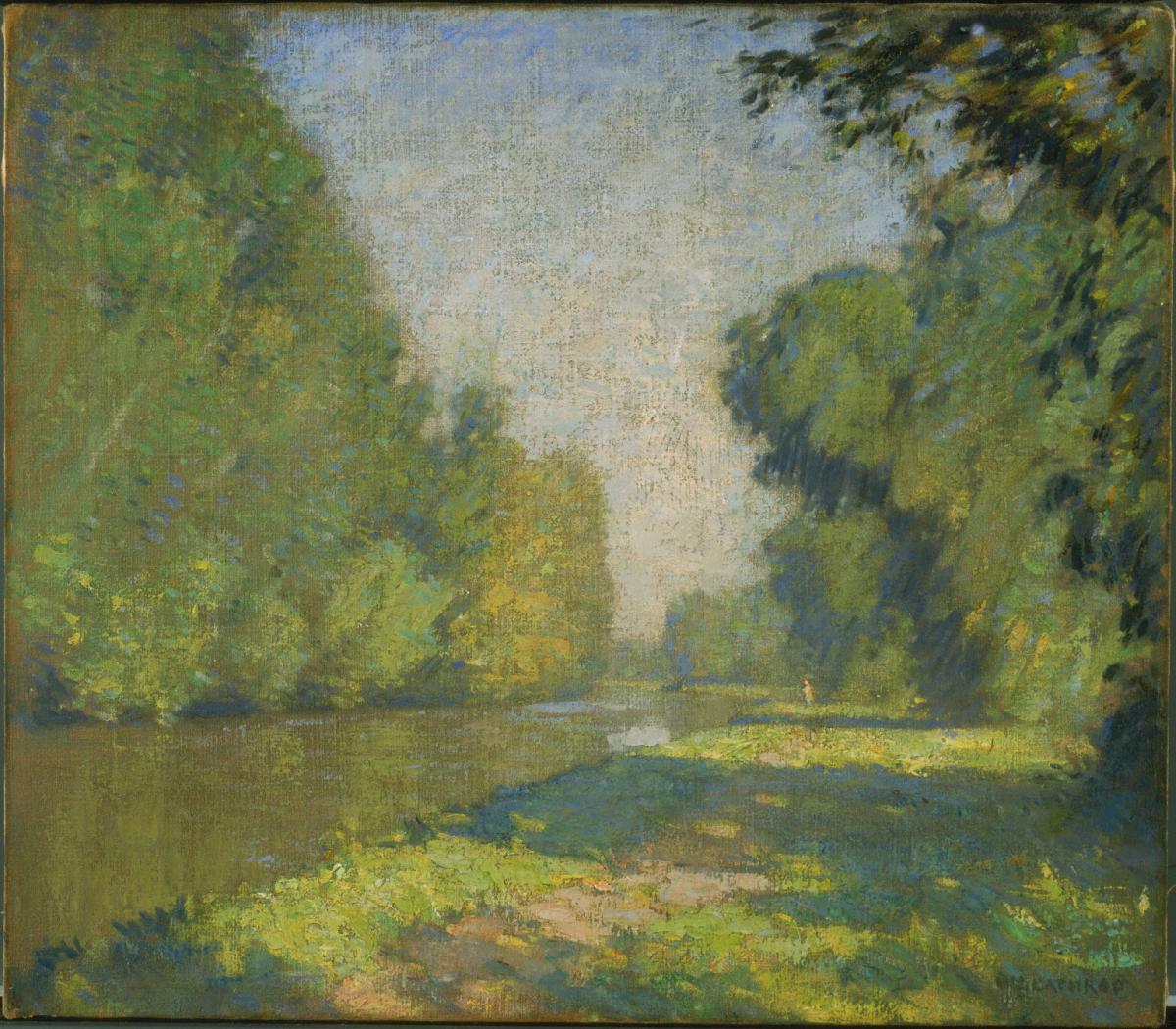The Tow Path
William L. Lathrop ( not dated )

Lathrop moved to Phillips Mill, Pennsylvania, in 1899, where he began to paint his most impressionistic works, helping to found the New Hope Artist’s Colony. Though he painted landscapes, Lathrop preferred to paint in his studio. He once said, “One would not write a poem from nature, so why should a painting be made from nature any more that a poem. One thinks and digests something one is about to write. So I like to think and browse over my painting before I put it on canvas. I take my liberties with the scene…I get the feeling of the place, make some hasty pencil sketches and then paint.”
Though William Lathrop did not date The Tow Path, we can be sure it was painted before 1921, the year Duncan Phillips purchased the painting. The painting has a sweet, impressionistic feel, with Lathrop’s bright warm palette of blue, brown, and green flecked with bits of yellow where the sun catches the grass. Phillips recognized a sensitivity in Lathrop’s canvases, calling him a “painter of poetic truth.” He stated that The Tow Path was one of the best canvases in his whole collection, feeling “a sense of stillness and of landscape honed to its basic elements.” In 1926, Phillips remarked, “The Tow Path would strike a responsive chord of remembrance wherever in the world there are drowsy little canals. Lathrop’s reserve in an age when big exhibitions require every painter to make a sensation or be overlooked in the general confusion must inspire respect even if it does not stir the pulses.”